Phantom Brigade and Company of Heroes 3 are two very different games. The former is a turn-based-simultaneous-resolution tactics game about mechs, the latter a base-building WW2 RTS. However, they both feature map campaigns that suffer awfully from lack of variety. We’re fighting boring, repetitive battles against supposedly distinctive enemy formations that all feel the same. These shortcomings do not encourage sticking with it to the end. They’re not, however, unsalvageable. With some elbow grease, we could make them work.
This post was written many moons ago, not long after Phantom Brigade was released. I hear they have been patching it to be more interesting.
Snooze havoc!
First off, the battles. Both map campaigns rely heavily on fighting a random amount of battles that often amount to little more than single player skirmishes tenuously strung together. In Phantom Brigade (and in another indie mech game, Battletech), you at least have your squad that carries over. In Company of Heroes 3, you’re earning resources and experience to upgrade the campaign map unit (no, Company of Heroes 1-era “hire units that gained veteran status in a previous battle” isn’t an option) to get more options on the battlefield. But this doesn’t change the fact that you’ll be replaying the same map against roughly the same opposition many, many times.
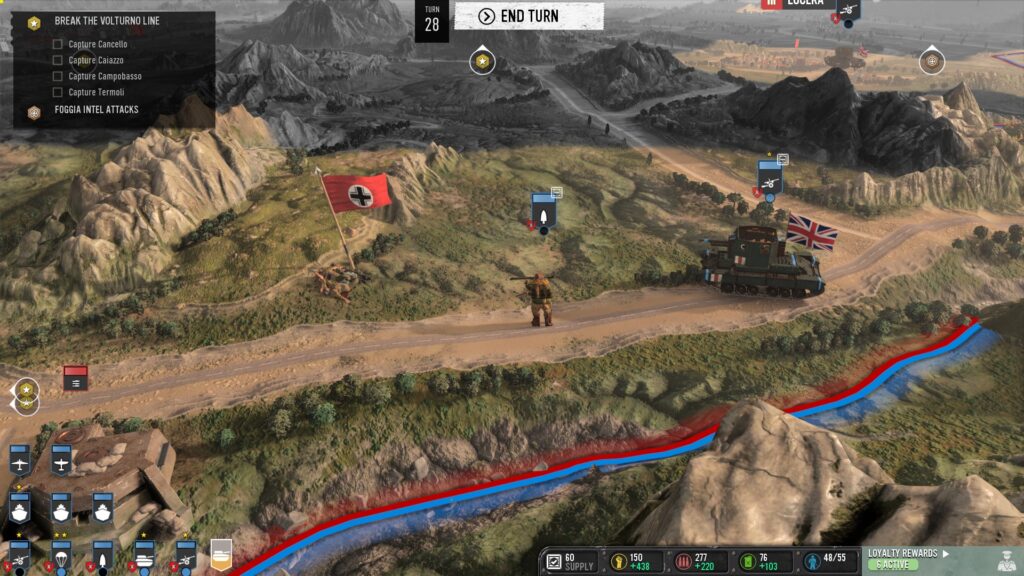
The famed Company of Heroes 2 DLC Ardennes Assault tried to breathe new life into the stale formula: random secondary objectives! Safeguard a unit, destroy a specific enemy, whatever – something to spice up your life. Company of Heroes 3 and Phantom Brigade tried that. For the WW2 entry, you had to retrieve a damaged scout car, collect airdropped resources, or keep certain territory under control. For the mech game, it was about the infrequent task of keeping some buildings intact or destroying alarm towers. These were not enough, especially when the random objective pool is three entries deep while the campaign features tens of battles.
May I kindly ask we do something about this? Sure, this will require a lot more design and coding, but if it can keep me glued to the game until I finish the campaign at least once, it would be so much better.
The curse of symmetry
For base-builders, the first change could be not having symmetrical starts. Don’t leave us with but an HQ building and one default infantry unit. If the player is attacking the enemy in an entrenched position, have AI already be controlling half the map, with machine gun nests, minefields, and dragon teeth dotting the field. If the player is defending, give them this advantage – but also give the AI enough early units and/or resources to be able to meaningfully advance into the no-man’s land.
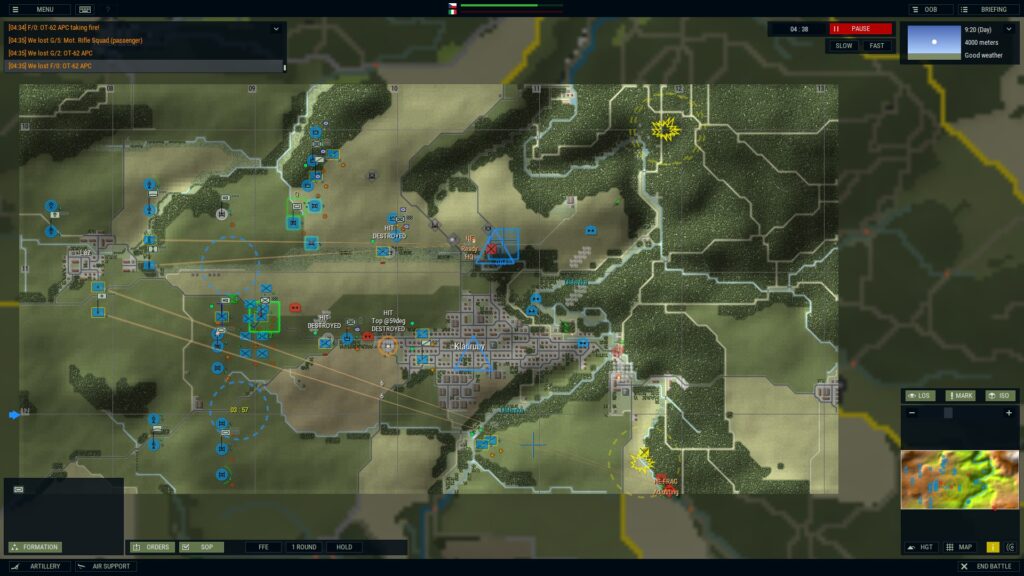
Plus, there are ways to start these battles in-media-res. Maybe the player is replacing a weakened AI unit on the field. Maybe the enemy is breaking through the line and the player is going to contain them in the sectors allied AI doesn’t control. Maybe the town is on fire from previous fighting, thus removing a lot of good cover. Maybe the enemy is actually the one rotating units and if the player times it just right, they can finish this before it’s all over. Or maybe the player already has a combat patrol in need of rescue.
Then you can play with the objectives. As you’re not simply playing skirmish deathmatch, the main objective might actually be to:
- blunt a fierce enemy assault (this is kind of a thing already in CoH3);
- break through the enemy rearguard;
- escort a convoy off map;
- exit sexy fighting units (like tanks) off map;
- destroy an enemy HQ unit before it retreats;
- take or destroy an enemy supply depot;
- grab and defend an important piece of terrain;
- do VIP retrieval;
- sabotage stuff in a territory you’re conceding;
- act as a rearguard.
Then you can spice it up with tiny secondary objectives like retrieving an intel asset, doing CSAR, salvaging an important piece of tech, collecting dropped supplies, destroying a specific enemy unit. The stranger your setting, the stranger objectives and side objectives you can have. A MechWarrior may not care about a shrine being defiled – but the Imperial Guard would.
There are also twists you can pull in the middle of the match. Allied reinforcements can join the fray (the players wouldn’t mind, especially in Battletech). There may be errant air or artillery barrages. A bridge collapses randomly. A fire starts. Weather changes. A civilian convoy blunders into a battle. Neutral factions (please have neutral factions in RTS games, TYIA) become aggressive. The sky’s – that’s how we call the budget in our parts – the limit.
I’ll never remember the face of my foe
But the battlefield is only half the battle. There’s also the matter of the opposing force. In Phantom Brigade, there’s supposed to be a notable when fighting Reserve, Army, Special Forces or Experimental formations. There aren’t. There are – if you squint – differences in what units you’ll face. But functionally, only the quality of loot is the real indicator of who you faced. Similarly, in Company of Heroes 3, you can run into armored, mechanized, and motorized formations. I don’t think I’ve ever felt the difference on the field.
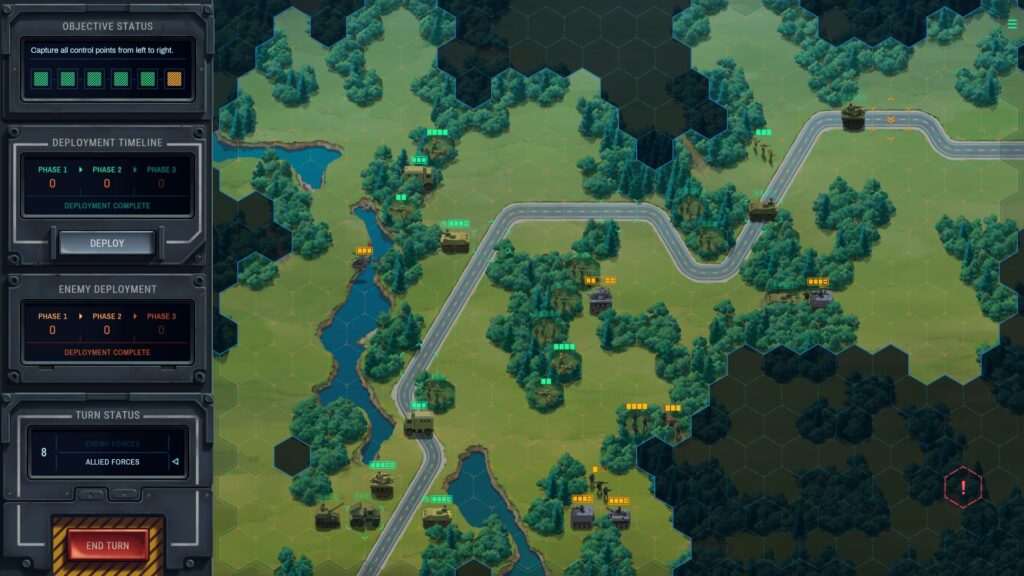
So how do you signal the specifics of the force? For games like Phantom Brigade or Battletech or other games where you don’t recruit units in battle, it’s all about the force compositions. A reserve formation should be less experienced, less sophisticated, but potentially larger. More of the mechs that fluff describes as old and outdated. More light units – maybe they used to be considered medium a few years ago. Mix in more non-robots.
Distinctive skins and color schemes would also help.
It is a tad bit harder for base builders. With Company of Heroes, the likely belief was that specialization trees would be enough difference. However, the units they provide usually appear late and are expensive. On the other hand, if you insist on the player starting out with barebones bases, you can’t just have an armored formation burst into the base with panzergrenadier-supported tanks.
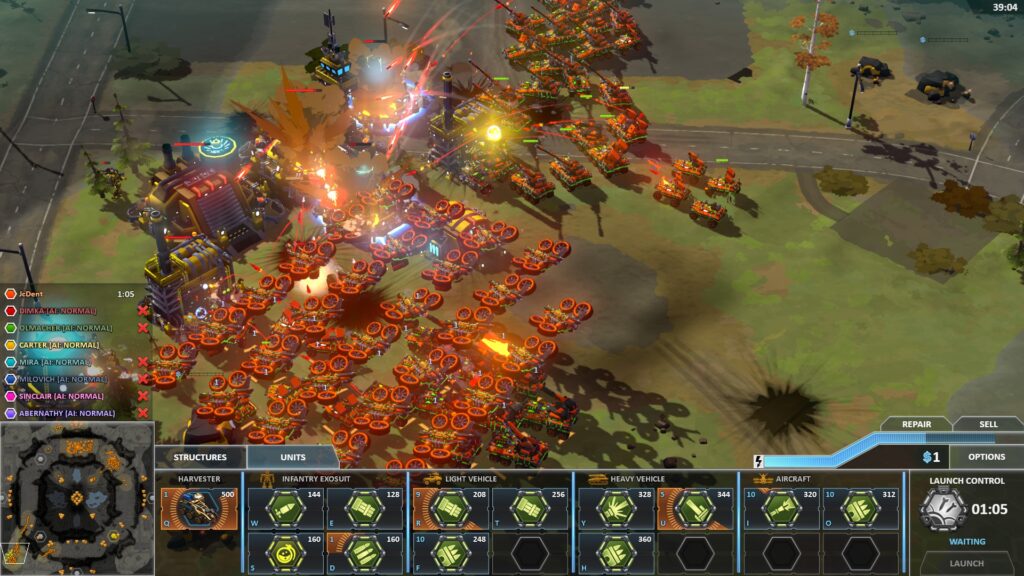
So you can employ two tricks here: the cheap one is to fiddle with the unit access and prices for the AI based on the sub-faction it’s supposed to represent.
The expensive part is messing with AI to make it act in accordance with its role. What would be early units appropriate for an armor formation to field? Would a motorized infantry unit field their troops in different mixes, with different upgrades? The player would be bound to notice that sometimes, the AI is happy to run more motorcycles, or that it has an insistence of pairing rifle-armed grenadiers with HMG teams.
And if the AI differences are also apparent in the retreat mechanics, both in when units panic, and how far a formation is ready to go before throwing in the towel, why, that’s just marvelous.
It also helps if you tell the player what the difference is supposed to in addition to tailoring the force. Phantom Brigade definitely tried describing the differences between the subfactions, it’s just that they didn’t feel true when playing the game.
A brief note for people making map campaigns for games with persistent forces
The player engaged in your game, by necessity, cares about the forces surviving to fight again. To them, each loss – sometimes even mere damage – matters.
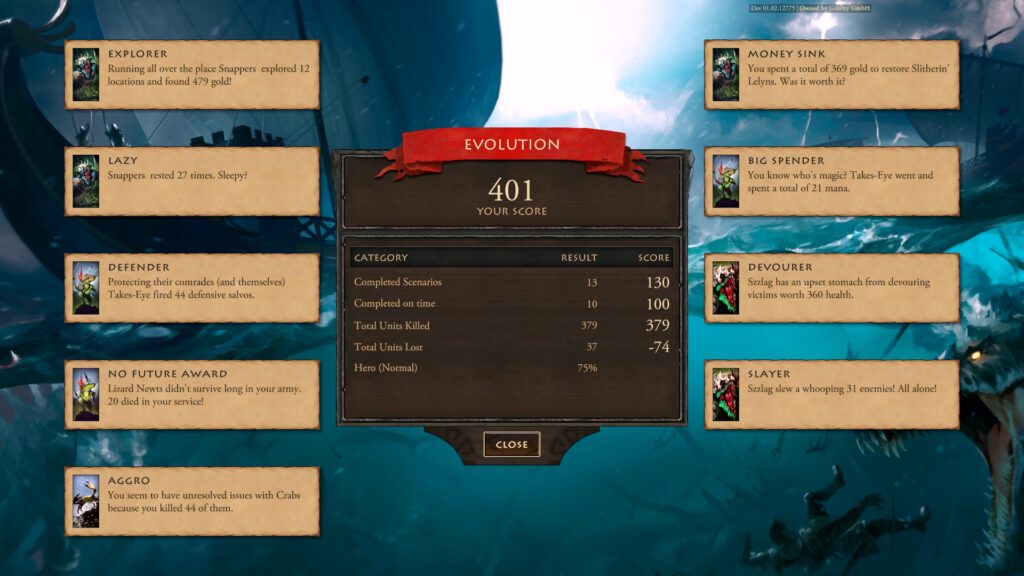
So why do you always make them fight the enemy that has made peace with their gods, fighting fearlessly for they are already dead in their hearts?
This kind of imbalances the equation. One force is incentivized to care about their future prospects, to the point of retreating (the hardest thing to make a player do), the other doesn’t exist outside the match. Thus, a lance will consider losing half their number while the enemy force is still intact to be a mere inconvenience, and a tank left alone on the field will not shy from facing down three heavy mechs.
It’s not just video games that should heed this advice. TTRPGs should bake in, hard, morale rules into their systems and explain their importance at length to players and GMs alike.
If you say that “a good DM can fix it,” you’re automatically disqualified.
Outside of being annoying where gameplay is concerned – who wants to go hunting for the last limping Flea? – hurting verisimilitude, and also hampers game design.
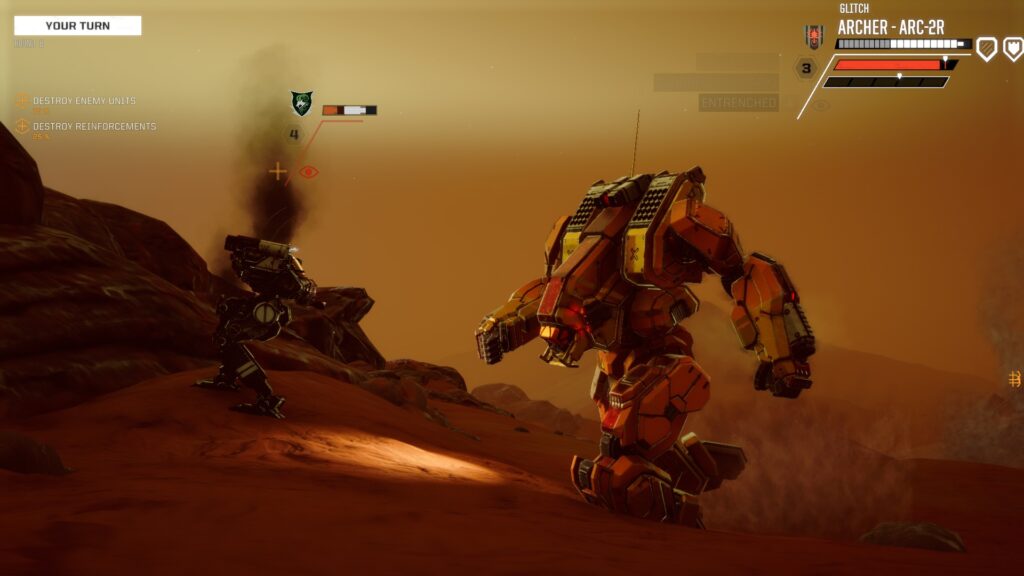
Notably, in Battletech, the game had to be balanced with the idea that the four mechs the players will bring will be facing an enemy heedless of its own survival. That’s why they had to drag out such obvious dirty tricks like pirate mech lances that incidentally always happen to have their armor already slashed by 50%.
But having an enemy that operates with a similar desire to survive as the player, then you could have tenser battles with opponents on a more equal footing. Who’s going to flinch, the player or the AI?
Just do something
To conclude this essay, I’d love to see RTS games turn away from simple RISK-map campaigns. If your heart isn’t in it to make the map dynamic and interesting, make a regular story story campaign. But if you’re going for a map campaign, then make it exciting – and make the AI have investment as well.

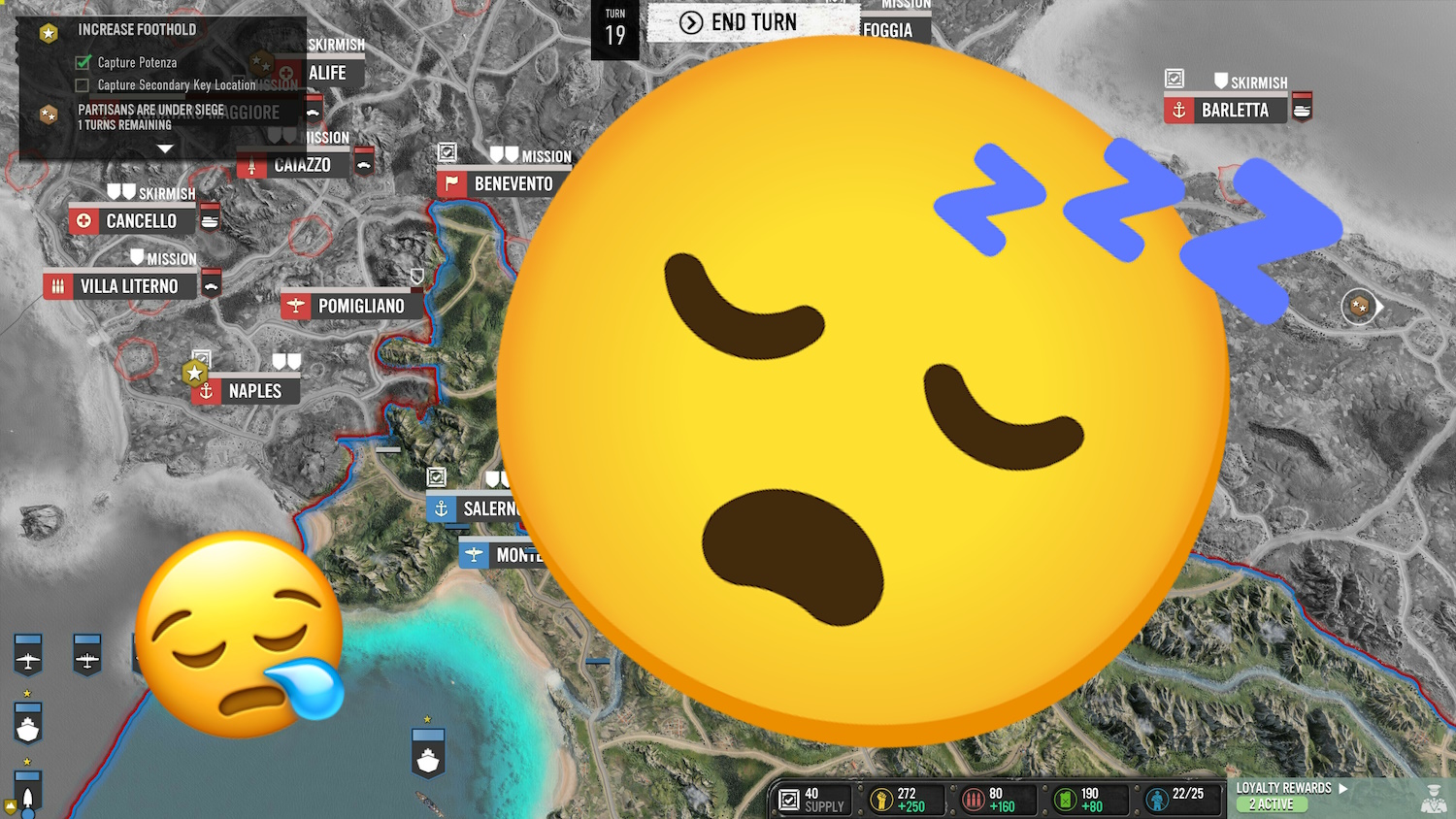
Please Review my new game on Steam: Bastogne Breakout .
Email me and I will send you a steam key